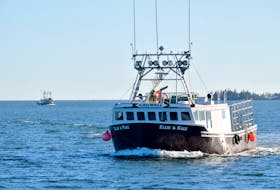The coin, which was found by teenager Kieran Bent, he believes may have been traded by the European settlers with the Mi’kmaq.
“Through my historical research, the beach and area around Abercrombie’s Loading Ground Point, The Sluice and Dunbar Point contained a large Mi’kmaq First Nation encampment dating well before The Betsey arrived from Philadelphia in 1767,” Ashton said of the area where the coin was found. “Artifacts have been dug up in this area for centuries and historical references have been made of Mi’kmaq campsites near the beach area.”
In the 1760s and earlier, coins were very valuable and used for trade and barter by visiting European fishers and merchants who plied up and down the entire Nova Scotia coast lines, including Northumberland Strait, he said.
“Canada during this time did not have a coin or monetary system and any coinage was used for trade and for valued keepsakes,” he said. “Many early international coins have been discovered all along Nova Scotia’s beaches, rivers, streams and shorelines. The early founding nations, especially the British, did almost nothing to provide any coins to the colonies.”
Historical information indicates that around 1760, England would send the occasional shipments of badly worn copper coins to the settlements.
“It very well could be that other European copper coins including Kieran’s 1765 Russian Empire coin could have been in the mix, eventually finding its way by trade or barter with our Mi’kmaq First Nations people who lived in the Abercrombie and beach area,” Ashton said.
He said metal was valuable to the Mi’kmaq because when the settlers came they didn’t know about the process of making it.
“It was valuable to them because it was new to them,” he said.
While it’s possible, Ashton doesn’t believe that the coin would have come from coal ships filling up near the point because that didn’t start until around 1839.
Whatever the case, he said it’s an amazing find.








